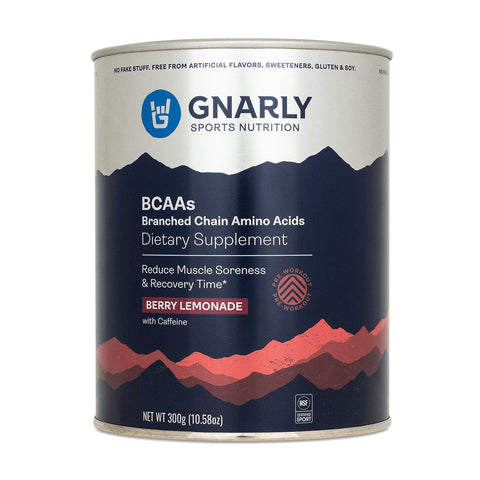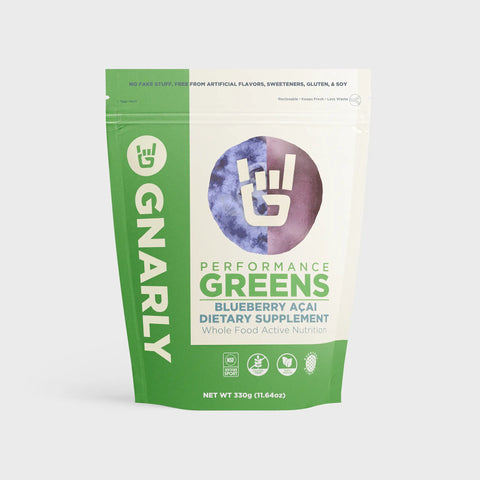Life is a string of learning events. We know more today than we did yesterday and tomorrow will be the same story. When it comes to Gnarly athletes, this includes not only learning from fueling fails, but learning what nutrition plan works best for their individual bodies, sport, needs and desires.
We’ve all made some epic mistakes we hope to never repeat and a great way of avoiding future missteps is to learn from others. To gain some insight into what Gnarly climbers wish they had known about fueling long ago, we gathered up some expert voices. Here’s what they had to say.
Piseth Sam: Rock climber, massage therapist and personal trainer badass
Biggest nutrition lesson: Eating regularly is essential
“It doesn't matter if it's three meals or five smaller ones, it is simply critical to have that regularity in food. Of course, balanced eating means all your macros (fats, carbs, and proteins), and more veggies/fruits than you think you need! Clif bars do not make a meal (or even a good snack, in my opinion, although they'll do in a pinch).
So often, whether the activity is climbing, weight lifting, or running, I see people just not eating enough. When you're exercising regularly, most folks need to eat more than they think, and being at a caloric deficit impacts not just athletic performance, but overall mood and energy levels. Especially during winter, regardless of activity level that day, we always prioritize a snack between lunch and dinner (big favorites include banana and peanut butter on whole grain toast and promeal, that's Gnarly's vegan protein with oatmeal!)”
Becky Switzer: Rock climbing crusher
Biggest nutrition lessons: Hydrate the day before, gummy worms are awesome and don’t forget the carbs and protein
“I always try to pre-hydrate before a big outdoor effort. If I’ve got a project I’m working on and will get to climb on it on Saturday, I’ll make sure I’m drinking plenty of water on Friday.
Come Saturday morning, I’ll use either Gnarly Pre Workout or BCAAs prior to climbing.
As far as fueling goes, I’ll also make sure I’ve had a decent amount of carbs the morning before climbing.
I make sure to bring some whole foods if I’m climbing outside — snacks that are balanced in carbs, protein and fat. PB&J tortillas or sardines and crackers are my favorites. I will also bring some simple carbs in the form of gummy worms to eat before pulling on to the wall to give me a quick energy hit.
Post climb fueling is always Gnarly protein. I go back and forth between the whey and vegan depending on what I have on hand. I try to get that on board within one hour of ending my climbing session. I’ll follow that up later with a balanced meal, well-rounded in protein, carbs and fat. Many days it’s super tricky to get enough protein, but Gnarly’s travel packaging makes it so simple if you’re away from home, or at the crag. This protein source is integral in my recovery.”
Kyra Condie: Team USA Olympic climber
Biggest nutrition lesson: Creatine is suitable for her vegetarian diet
“I didn’t learn till way late the benefits of creatine, especially for power athletes who don’t eat meat. I notice a significant increase in power when I regularly take creatine and bet it woulda helped a lot when I was younger!”
Dru Mack: Climbed 21 5.14s in 2021
Biggest nutrition lesson: Food impacts everything — from performance and recovery to mental and emotional wellbeing
“Growing up I always had a terrible diet that included snacks, sodas and sweets. I wasn’t fueling my body well for optimal performance, but to be honest, it's all I really knew. I didn't have much understanding of how food affected my life as well as my rock climbing performance.
Years down the road, I’ve begun learning more and more about how food has a massive effect on how I feel, how I recover and how it pushes me to higher limits. I still have a long way to go but here are a few quick things that I’m doing.
In the past, my morning meals would be quick and easy, maybe a bar or cereal. Efficiency was more important than anything. Over time, I’ve learned a more balanced breakfast can get my day started right and give me the fuel for a full day. Sometimes this looks like oatmeal or a smoothie, or sauteing some veggies!
In the past I would never plan lunches. I might stop at a gas station on the way to the crag and just buy whatever. I learned this can be expensive, wasteful and doesn’t help my climbing. Planning helps, buying good snacks, or preparing little lunch packs can go a long way.
I also have come to realize how much better I feel when I’m well hydrated. I’m basically just a plant; I just need sun and water. A lot of the Gnarly products like the Hydrate or BCAAs really help me stay hydrated. They taste good and help me get more liquids down. Not only does this help my climbing, but it really plays a big part of my mental and emotional health.
The last thing I’ve learned is how important fueling has become post climbing. Sometimes I wouldn't eat for hours after a hard day, or I might pick up fast food if I’m travelling. I’ve learned how tremendously important it is to give my body things that it needs immediately after climbing. I have less of a post climbing crash, and I definitely recover better. Now I just bring a shaker with Gnarly vegan protein and Performance Greens. I chugg one of those down after climbing. The protein and really important micronutrients really help prepare for everything that is to come. MORE MORE MORE.”
Genevive Walker: Rock climbing inspiration, van-life expert and has bragging rights of climbing 212 routes in 24 hours
Biggest nutrition lesson: “That food is my friend,” iron supplementation can help battle fatigue and hydration is essential
“Years ago when I was new to climbing, I fell into the trap of believing that a decreased body weight would improve my strength. This led to cutting calories by way of an eating disorder and an unhealthy relationship with food. Instead of seeing food as my body's source of energy, I saw it as a hindrance. This unhealthy pattern worked in the beginning. I saw fast gains, felt ‘stronger’ and sent harder but had no idea what damage I was doing to my body in the long run.
If I could go back in time, I wish I could teach myself how to use food as a way to fuel my body. To understand how hard I was pushing myself and how much I was depriving myself of necessary nutrition every day, especially when it came to carbohydrates.
Now, I remind myself to eat whatever I damn well want — in moderation, of course. I place a lot of focus on fresh raw vegetables, eating smaller meals more often throughout the day (instead of three large meals), and my protein consumption, especially after a workout. The relationship between protein and recovery was something I didn't really understand much about until recently, so I've been incorporating Gnarly's vegan protein within my food and my post-workout routine. I've definitely noticed an improvement in the way my body feels, especially on rest days. After understanding that my diet alone wasn't enough to combat my iron deficiency, I started taking iron supplements daily which has helped improve my crippling fatigue.
Another big change I've made over the years was increasing my water intake drastically. I used to go full climbing days outside without drinking any water, unless I was hot and sweaty. I remember some days getting back to the car to unload my pack, noticing my Nalgene untouched, and never thinking twice about it. That's changed a lot. I now wake up and have a glass of lemon water every morning, carry a Nalgene around with me throughout the day to keep tabs on my intake and keep Gnarly Hydrate in my climbing pack for long crag days or gym sessions.”
Tim Kang: Rock climber for team USA, coach and phenomenal vlogger
Biggest nutrition lessons: Collagen is king
“I pretty much thought zero about nutrition for a long time. I think the only thing I had in my thoughts about nutrition or recovery was protein and the misconception that protein just bulked you, so I never took it. When I started climbing, I just wanted to stay light.
The first thing I started taking was collagen. I got a ton of finger injuries when I was just starting out with climbing and someone told me collagen would be helpful. Basically ever since then, until literally a couple months ago, I had no real injuries, so I started to believe in nutrition and supplements quite a bit more.
Now in my training sessions I always have two bottles with me; One is Gnarly whey protein and the other is collagen with BCAAs and Hydrate”
Maiza Lima: rock climbing legend, routesetter and knows how to build a cabin with her own two hands
Biggest nutrition lesson: Fats are great
“I got extremely sick when I was eating a super low-fat diet. Later I learned that my body actually thrives on fats and I was depriving my body of that! Right now my diet is more focused on fat than anything else, and I do so much better. I feel way more satisfied and I don't eat all day like I did when I was on a vegan diet.”
Brandon Belcher: Atlanta-based bouldering machine
Biggest nutrition lesson: Creatine can work wonders and real food at the crag is crucial
“Over the summer when it was too hot to climb, I started a lifting cycle. I increased my caloric intake and I also added in five mg of Gnarly Creatine per day. I have noticed drastic improvements in not only my physical appearance but also my power output. I feel really strong and really snappy.
I've also been doing a lot more proper meals when I'm out at the crag. Before, I used to just bring a bunch of snacks like Clif bars and trail mix, but it wasn't until this past year that I became more intentional with the meals that I was bringing out to the crag. Now I actually bring out a proper sandwich. Recently, I started bringing a container of rice and a can of sardines for my lunch and sometimes an orange, too.
I’ve also found that taking BCAAs, especially after a really intense session, has been really helpful.”
Debbie Carrasquer: badass rock climber, coach, student and van-lifer
Biggest nutrition lesson: Timing is key
“Before any session, I prioritize slow carbs and protein. I have my own homemade breakfast oatmeal recipe! I allow one hour for digestion before any exercise.
Right after that meal, I mix five grams of Gnarly Creatine with one scoop of BCAAs in water and drink it on my way to the gym or crag. The creatine helps me to get more training in (more laps, more sets, more fitness overall). The BCAAs ensure the next day I do not have muscle soreness so I can keep training.
I used to make 2 main mistakes while working out: 1- wrong timing, and 2- wrong type of carbs.
I would eat a bunch while climbing (especially outside) because I was interpreting food as fuel, but I was definitely messing up the timing. I make sure I eat a lot prior to my session so I am not hungry while trying hard. I learned that I cannot really perform at my best while my body is using the resources to digest. Now I make sure that during my session I only eat fast carbs to help me get that extra boost across my session. I used to think all fruits were fast carbs so I would regularly be eating high-glycemic fruit like oranges and not be getting readily available energy between attempts. Now I have them narrowed to my favorites: Gnarly Fuel2O, dates, banana and dried mango.
When I climb outside, my sessions are much longer, so I break halfway through the session to refuel. If I don’t do that, I am definitely increasing my chances of injury. My rule of thumb is ‘If I’ve done consistent physical exercise for two hours and I expect to continue for at least two more, I need a meal!’ In that case, I drink Gnarly Vegan chocolate mixed with water and any other of the fast carbs previously mentioned to boost the macro of carbs. After some resting time I go back at it!”
Alice Hafer: Rock climber, yoga teacher and performance climbing coach
Biggest nutrition lessons: Eat more at the right time, eat more protein and hydrate on long days
“Eating before and during a session was a game changer for me. Before I had knowledge about nutritional timing, I wouldn’t eat enough for my sessions and get tired, thinking I wasn't in shape. Now I make sure to eat before, during and after sessions.
Using Gnarly protein as a shake throughout the day as a snack also helps me preserve energy and recover. Eating more protein in general was a huge change in my recovery. I also use Hydrate in very tactical ways when I have a long day. So usually I would hike maybe one to two hours uphill with a backpack and get cramps while climbing, so I use Hydrate and eat carbs after the hike to make sure I have enough energy to climb.”





